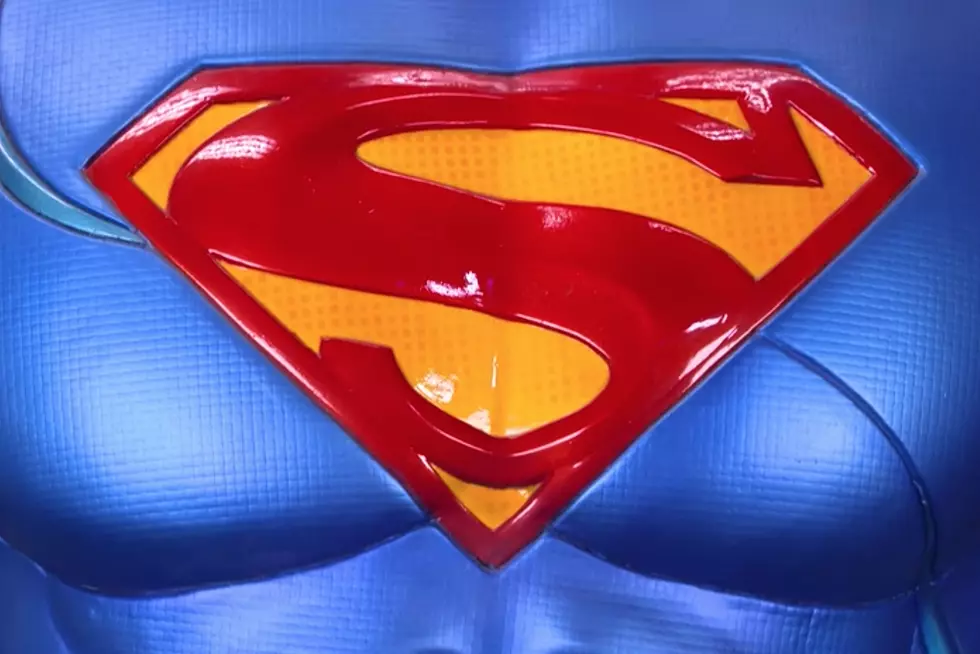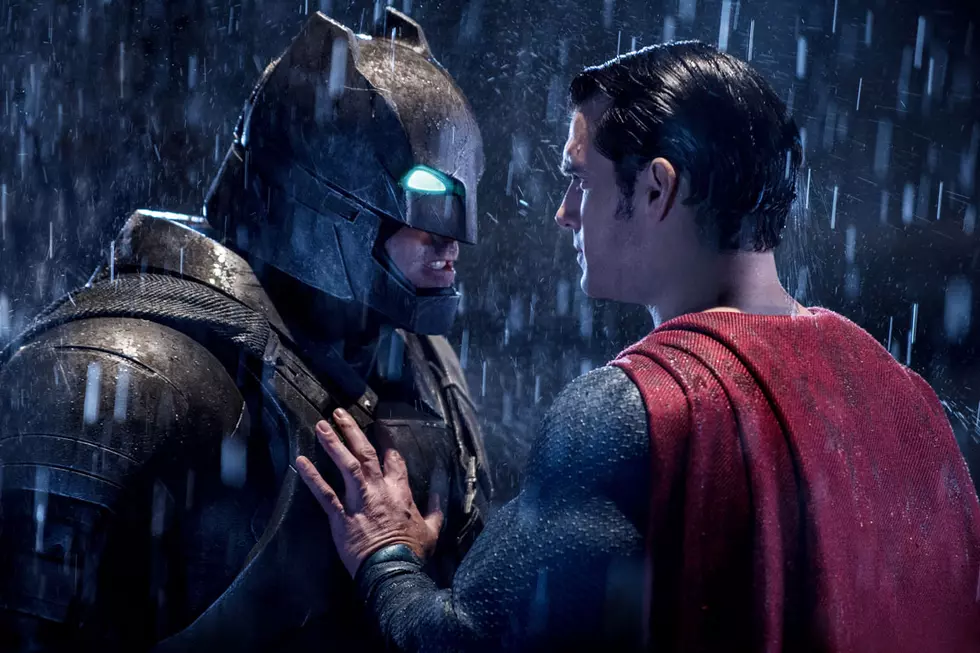
Buy This Book: ‘Superman: Secret Identity’

Last week, DC Comics released a new paperback of Kurt Busiek and Stuart Immonen's Superman: Secret Identity, and if you haven't read it, this is a pretty good time to remedy that. It's got a premise that's immediately interesting, starting from the simple question of what Superman would be like if he existed in the real world -- our world, the one that already has Superman as a fictional character -- and builds from there into a four-part series that follows him through his life, using his powers, helping people and building his own family.
And it's one of the best Superman stories of the past ten years.
 With most stories with the word "Superman" in the title, it'd be pretty redundant to say that they follow the adventures of Clark Kent, but with this one, that's where the twist is. This Clark Kent, who does in fact hail from a small town in Kansas, was given that name by parents with a sense of humor and had to suffer through a lifetime of "funny" Superman-themed gifts from well-meaning but clueless relatives. This, I think, is something most comics fans can relate to -- surely I can't be the only one who got stacks of random cheap back issues for my birthday, right? Anyway, as you might expect, things pick up when Clark suddenly (and, for a while, inexplicably) wakes up in mid-air with powers far beyond those of mortal men.
With most stories with the word "Superman" in the title, it'd be pretty redundant to say that they follow the adventures of Clark Kent, but with this one, that's where the twist is. This Clark Kent, who does in fact hail from a small town in Kansas, was given that name by parents with a sense of humor and had to suffer through a lifetime of "funny" Superman-themed gifts from well-meaning but clueless relatives. This, I think, is something most comics fans can relate to -- surely I can't be the only one who got stacks of random cheap back issues for my birthday, right? Anyway, as you might expect, things pick up when Clark suddenly (and, for a while, inexplicably) wakes up in mid-air with powers far beyond those of mortal men.
At its heart, Secret Identity is a modern update of Superboy Prime -- a character who got an actual modern update in the form of a petulant Internet troll with a bloody Superman logo who ripped people's arms off in the pages of generally unreadable crossovers. Unsurprisingly, Busiek and Immonen go with a version that's a little more optimistic. Even though Clark doesn't start out with the saintlike qualities of his comic book namesake (he's pretty average in just about every way, aside from the stuff where he can leap tall buildings in a single bound), he's never "corrupted" by the evils of the real world. Instead, there's a great, Spider-Man-ish message there about power and responsibility, about what it means to have that power and to decide to use it to help people.
There's an amazing bit in the second issue where Clark is ambushed by government agents and taken to a lab to be analyzed. He's kidnapped, drugged and experimented on, and when he finally breaks free, he's surrounded by all the horrors that you'd expect from that kind of scene -- all of which Immonen does a great job of making horrifying without being lurid or grotesque. The whole thing prompts him to go on a rampage, destroying the lab and all of the information they've gathered:

But even with all that, the next page shows Clark pulling his would-be vivisectionists out of the flames, saving their lives. It's not a decision that's agonized over, and neither is Clark's decision to use his powers to help people. It's just done, and presented as being the right thing to do.
That, I think, is the core of what makes Secret Identity such a great read. It's one of those stories that treats Superman like the inspirational figure that he is, giving us a role model and reminding us that we're all capable of using our abilities for good. It just extrapolates that to showing us someone who has those same powers, and then makes doing the right thing with them a foregone conclusion, even when there are potentially awful consequences for those actions.
Beyond that, though, Busiek's strength in this story lies in the relationships he creates. On that front, Secret Identity reads like one of the best issues of Astro City, occasionally shifting the focus away from the superpowers to show the lives behind them. The cornerstone of the series is Clark's relationship with the woman who becomes his wife, who, of course, is named Lois:

The gag about setting up a Clark Kent with a Lois is a solid bit of comedy, but the way Busiek and Immonen play the relationship that builds from it is really incredible, and economical too. I imagine it helps that they're working from a template, of sorts -- in the same way that Clark is a good guy with Superman's powers, Lois has a lot of her counterpart's brassy personality -- but the way they're able to show these characters falling in love in the span of 48 pages is genuinely incredible.
Clark himself is a great character, too. There might not be a conflict about morality, but, as the story implies, he's constantly having to deal with what it means to keep these secrets, and who he needs to keep them from: His small-town classmates, reporters, Lois, the government, even his children. And the way he chooses to keep those secrets are often incredibly entertaining just on their own:

And it's not just them. The bitter reporter who first breaks the "Superboy" story when Clark's a teenager, his Flash Thompson-esque classmate (another Spider-Man connection), his needling coworkers, Clark and Lois's daughters, they're all well-rounded and engaging characters that help to support the narrative. Even the government, initially played as something that Clark needs to fear and the closest thing the story gets to introducing a supervillain, isn't portrayed as something entirely one-dimensional and uniformly evil. Instead, the handler that gets assigned to Clark's case becomes a part of the story himself -- and one of the best parts at that.

There's so much humanity to this book, and it's not just Busiek who's putting it there. Immonen's art is amazingly expressive, which isn't much of a surprise if you're familiar with his work, but is always incredible to see on the page. It has a more "realistic" style than he used on titles like Nextwave or All-New X-Men to reflect the "real-world" nature of the story, but that allows him to occasionally break out of that style and do something that grabs your attention. The chapter breaks -- and Clark's hallucinations while he's being experimented on -- are done as Superman panels from the past, which Immonen draws in the style of Shuster, Swan and even Bruce Timm. It's minor, but it's a nice display of his range as an artist.
The best choice he makes, though, is that even in the real-world sequences where he's using a more muted color palette, he'll use bright, popping colors for the Superman costume that Clark wears to protect his identity:

It's a great book, and easily one of the most underrated Superman stories ever written, by two of the best that comic books have to offer. It's well worth picking up this week in paperback, but if you can't wait to get to the store, all four issues are available on Comixology as well. Give it a read. It's worth it.
More From ComicsAlliance









